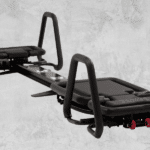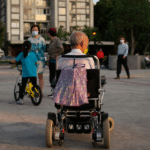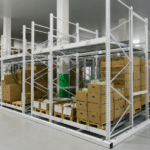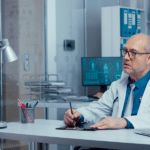New York City has some of the most infamous traffic in the world — at the very least, the most historically talked-about. Alongside Los Angeles, jokes and comments about the traffic in New York is a pop culture staple. “Traffic signals in New York are just rough guidelines,” David Letterman once quipped, and John Steinbeck once said, “its traffic is madness …but there is one thing about it – once you have lived in New York and it has become your home, no place else is good enough.”
But jokes aside, New York faces some real issues when it comes to its transportation. New Yorkers spend an average of 72 hours a year in traffic, almost double the national average. From 2012 to 2014 there was an annual average of 1,098 deaths, 12,093 hospitalizations and 136,913 emergency room visits because of traffic incidents. New York’s traffic is rated the most congested in the United States, and ranked fifth in the world, behind London, Paris and Moscow. Even with the easing of traffic due to the COVID-19 pandemic, getting around in New York City is likely to become even more of a challenge.
There have been countless proposals and ideas on how to resolve New York’s traffic crisis, going all the way back to the 19th century — and it’s not as if the city hasn’t pioneered urban transportation in many ways, from the largest subway system in the world, the world’s first mechanically ventilated tunnel, and the Roosevelt Island Aerial Tramway.
Proposed solutions have included increased reliance on ride-sharing services like Uber, upgrading and expanding the existing mass transit system, congestion pricing, and more. As recently as 2017, there have been steps taken to improve commuter rail by expanding Moynihan Station and Penn Station. Upcoming projects include the addition of a second pair of tracks under the Hudson River.
Some proposals for helping relieve New York’s congestion problem include the construction of a light rail route in Red Hook (among other places), a streetcar route for the western shore of Long Island, and the conversion of 42nd Street into a light rail transit mall. There have also been proposals to implement rapid bus transit, new ferry routes, and improved access for cyclists and pedestrians.
To some degree, the congestion in NYC is unavoidable: the city only covers about 305 square miles of land, with an estimated 3.6 million drivers (not including visitors from out of state). While approximately half of New Yorkers use mass transit on a regular basis, that still leaves thousands of single-rider vehicles on the road.
The effects of this amount of congestion are manifold. Because NYC is so densely populated, the pollution severely affects the air quality, impacting the health of city residents. Traffic problems aren’t good for the environment, either — dense start-and-stop traffic sends a tremendous amount of emissions into the air, contributing to both pollution and climate change.
NYC’s traffic problems are also expensive: accidents are a common sight in the city, and the risk of getting in a traffic incident is, predictably, the highest in the state. The accidents alone cause an estimated $4 billion a year in property damage and medical costs, not to mention the negative impact made on auto insurance quotes (New York is one of the most expensive cities in the nation to insure your vehicle).
This is not to mention the stress incurred by the often hazardous experience of driving in NYC traffic, making a negative impact on both physical and mental health. And that stress can easily lead to further problems, not the least of which is road rage and aggressive driving — which will only make the roads more dangerous.
Finding a long-term solution to New York’s traffic problem won’t be easy — especially considering the budget cuts the city has had to endure. Experts are predicting the future will bring more expansion of cycling and electric bikes, as well as scooters. To quote New York Council speaker Corey Johnson, “E-bikes and scooters are going to be a major part of our city’s transit future, and I’m proud of the council’s work to ensure that future arrives safely and equitably.”
But there are limits to this progress — bike and pedestrian paths will eventually reach a limit, and ride-sharing will only go so far in terms of lessening congestion. The future is likely to see autonomous vehicles become commonplace, which will have both benefits and drawbacks. Self-driving cars are likely to make driving safer, although there are some concerns about autonomous vehicles preventing people from walking (and the negative health impact that would follow).
If nothing else, the future of transportation in NYC is full of options — it just remains to be seen which ideas lawmakers and residents are likely to embrace, and whether the city can tend to its basic infrastructure enough to enable these changes.


















